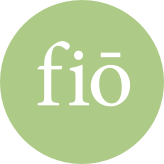Skill Building for Facing Change

Problem: A University program dedicated to building capacity in the nonprofit sector recognized that the magnitude of change faced by the sector. They decided to focus on providing executive directors with the opportunity to step away from their duties for 3 days to be exposed to skills and approaches that would help them to manage the changes faced by their organizations.
Solution: Fio Partners, LLC created the curriculum for Facing Change and brought 25 executive directors from smaller nonprofits through an educational experience that began with understanding how their natural tendencies influence their own approach to change using the Meyers Briggs Type Indicator. Participants also learned Fio Partners’ model of strategic management, as well as retrenchment planning, and were provided with an overview of options and strategies for creating strategic alliances. At the request of participants, material was created on site to help these executive directors dealing with Board problems.
Back to Top
Training Managers for Success

Problem: A progressive and innovative service provider experienced a major growth spurt, doubling a key division’s revenue and programs. Located in a city with a significant labor shortage, the agency hired over a dozen young supervisors: bright, educated and passionate about the work, but without strong knowledge of management and leadership. Using Fio Partner’s Climate Survey to create a baseline, it was obvious that employees were being managed differently within the multiple work units. This problem provided the agency with two opportunities: (1) to create a cohesive model of supervision that would support the organization’s culture; and (2) to use the training experience as a group building exercise among these young managers. Leadership recognized that just exposure to a variety of topics would not be effective. These supervisors needed real skills.
Solution: Fio Partners, LLC, created 96 hours of curriculum and delivered this material to a class of 12 supervisors and managers. The curriculum focused in three key areas:
1. Managing employee behavior to produce high performance
2. Managing programs to ensure that outcomes are met
3. Managing external stakeholder relationships such as clients, referral relationships, and funders.
The sessions were taught on back to back days about six weeks apart. The training was highly experiential and applied to actual work situations. Case studies were used but the class was encouraged to offer real cases from their work for the class to analyze. Exercises involving intensive skill practice were included in each session. Attendees were individually coached through the use of a management journal submitted to the instructor between classes as they applied skills in their workplace.
Back to Top
Research in the Field of Domestic Violence

Using field research to inform programmatic decision making in the field of domestic violence.
Problem: The domestic violence movement has succeeded in many arenas, including its effort to educate women of all ages and in all walks of life to the need to leave abusive relationships. While this is a good thing, the current configuration of congregate shelters is a challenge. Clients say they need housing and jobs to sustain their independence in addition to the counseling and advocacy they already receive. A network of seven domestic violence agencies, who already share a common advocacy role and share major federal and state government grants, needed to understand the current state of their field to support planning for future services, particularly in light of funding cutbacks. How could they best use the resources available to them? Is the current configuration of shelters the best use of those resources? How should they balance prevention, intervention, and advocacy?
Solution: FIO Partners conducted extensive research, including interviews with national experts, focus groups among clients and staff, an all staff survey, focus groups among other providers of allied services, and a literature review to provide an information base for this planning. The material was provided as a white paper and as a PPT presentation. An issues list that evolved from the research was developed. FIO Partners then facilitated a series of discussions among the CEO’s to determine how the challenges would be met.
Back to Top
Network Creation for State Contracting

A group of human service providers came together to form a network to support state contracting and offering a seamless system of care.
Problem: The Department of Children and Youth and Families in a New England State decided to reduce the number of contracted providers from 61 to 4 by insisting that their providers form networks. In so doing, they had several goals: reduce the number and length of stay of children in residential care settings, force providers to develop a family centered approach, and create a seamless system of care that would reduce family engagement in the child welfare system to irreducible minimums. Providers were faced with a choice of joining a network or losing their child welfare service contracts.
Solution: Fio Partners facilitated a yearlong series of meetings among 21 CEO’s who have gone on to incorporate and formalize their network. The process included design of the governance structure, creation of a vision and practice philosophy, cataloguing of the entire service array and clinical competencies within the network, and creating a framework for the further development of administrative and clinical policies.
Back to Top
Evaluation to Support New Orleans

A long-term evaluation relationship in New Orleans supports significant impact on the post-Katrina New Orleans community.
Problem: New Orleans lacked a credible source of data about itself, particularly at the neighborhood level. In a unique partnership among a local private foundation, a community foundation, the United Way, and Tulane University, the Community Data Center was formed. The means of data publication chosen by the CDC was publication on the web, with a target audience of nonprofits and government. Over a ten year period, the CDC has become the most trusted source of information about the city, playing a critical role post Katrina in vetting population estimates. Through their own approach to estimating population, the CDC supported the City’s census challenge leading to greater Federal funding for recovery efforts. The unique partnership between CDC and the Brookings Institute has set a high standard for reporting population returns post disaster that is now followed around the world. Throughout this period, the primary funder of the CDC has paid for a third party evaluator to help the organization grow in its early stages and to evaluate its impact over time.
Solution: FIO Partners sustained the role of critical friend and third party evaluator for nine years as the CDC developed. Initially assisting with organization building tasks such as logic model development, planning and creating an organizational culture of excellence, FIO Partners went on to develop tools and materials that examined the social impact of the CDC website and its astute positioning and marketing strategy. Through on-line surveys and interviews, FIO Partners has verified the expanded audience for the CDC, including local and national media and for profit businesses as well as federal and national funding sources. Partners has examined the evolving views of key leaders in New Orleans as to the worth of this effort over time.
Back to Top
Alliances Offer Contiuum of Care

An organization joined a larger parent cooperation to offer a continuum of care to the elderly.
Problem: The long term care industry in the US is facing lower rates of reimbursement and strong federal initiative to keep seniors out of nursing homes and to care for them in the community. A large, multi-facility, non-profit nursing home and assisted living organization recognized the need to diversify their service array and to include community based services. A provider of adult day health services realized the value of integrating their facilities into a larger continuum.
Solution: Organized as a parent corporation with subsidiaries for each facility, the larger entity became the base corporation of the broadened service array. FIO Partners assisted the partners in crafting an agreement to transition the adult day facility into the larger entity over a two year period. Careful balancing of autonomy and oversight was required to create an agreement that both would accept.
Back to Top
Planning Supports Growth

How planning helped a parent resource organization address significant growth and expansion.
Problem: In a state where budget cuts and tightening budgets is the norm, this nonprofit resource for parents of children with disabilities struggled with a different issue: significant growth and expansion. In three years, the organization had doubled in size and doubled its programs. The growing pains within the staff and the Board were apparent.
Solution: Fio Partners provided a robust planning process which included focus groups, stakeholder interviews with funders, an environmental scan, a Board survey and staff survey, a detailed infrastructure assessment, an analysis of their programs including the development of logic models and data to support program planning. It was also important to management of this agency to learn throughout the process and therefore, at many points in the process, Fio Partners taught key staff members how to use the assessment tools in order for the organization to track their progress over time.
Back to Top
Planning Galvanizes Leadership

A literacy volunteers organization uses planning to galvanize its Board and support program expansion.
Problem: Driven by an expanding set of programs and a group of new Board members, this small organization decided to undertake a strategic planning process. With limited resources, Fio Partners worked with the Strategic Planning committee to determine the most critical pieces of information they wanted to include in the process.
Solution: The process included a Board survey, ten stakeholder interviews (five of which were conducted by Board members), a detailed assessment of the agency’s infrastructure, and focus groups. The process culminated with a Board retreat where the Board revised the mission, vision, and values and identified strategic goals and strategies to support those goals. An implementation template was created to help the committee manage the three-year implementation process.
Back to Top
Planning Addresses Challenging Times

A large human services organization uses strategic planning to guide them through challenging times.
Problem: A large non-profit organization providing diverse services had grown dramatically over a three year period, and was then hit with major layoffs as their state contracts were cut. They needed a strategic plan to satisfy their accreditation requirement but they also needed to pause and assess their options given the dramatic changes in their organization.
Solution: Using FIO Partners assessment tools, the agency was able to assess the impact of the major changes on staff and to measure the strengths and weaknesses of their infrastructure. They were also able to identify the specific programs that should be heavily marketed and those that should be re-invented or phased out. A further key finding was significant infrastructure weakness that had been ignored during the period of significant growth. The funding climate continues to be highly volatile for this agency.
Back to Top
Merging to Consolidate Services

Two library service organizations merge to due to economic pressures.
Problem: Library service organizations have been hit hard by state budget cuts. While each state once had a fairly robust set of organizations to provide support to private, public, school and academic libraries, these systems have been under attack over the last few years. Many states now have just one entity that provides statewide support services. Recognizing the continuing pressure to capture the economies of scale of regional services, two statewide mid-western library service organizations chose to merge. Merging across state boundaries and dealing with an even larger membership and more extensive geographic reach were significant challenges.
Solution: Using a design team made up of Board members from each organization, given the widely geographic region from which Board members came, FIO Partners designed a merger process that had but two on-site meetings. All other discussions were held by webinar and conference call. The project was tracked through Basecamp, our online project management tool. The two organizations merged within seven months, with FIO Partners playing the pivotal role in crafting the Operating Agreement between the two organizations.
Back to Top










